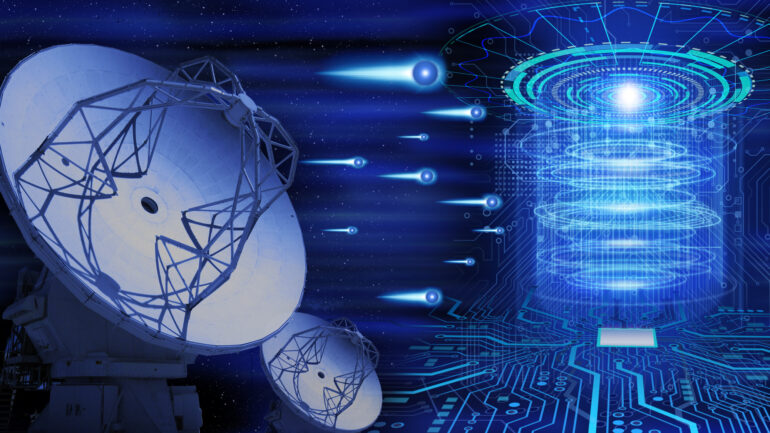Researchers at the National Astronomical Observatory of Japan (NAOJ) have invented a novel microwave isolator and have demonstrated, for the first time, its basic principle that enables small isolators; essential for future quantum computers. This isolator consists of two frequency mixers, which are widely used in receivers for radio telescopes, and paves the way for the development of large-scale multi-pixel radio cameras as well. The paper is published in the journal IEEE Microwave and Wireless Technology Letters.
An isolator is an electronic component that controls the direction of signal propagation and is used in various instruments, including quantum computers and radio receivers for astronomy.
Conventional isolators utilize magnetic materials, which in principle make it difficult to construct an isolator smaller than a few centimeters. This is an obstacle to the realization of large-scale quantum computers with one million qubits. Currently realized quantum computers have only about 100 qubits, and to increase this number by a factor of 10,000 would require a large number of components, including isolators, each of which would have to be miniaturized. The same problem exists in the development of large-format cameras for radio astronomy observations.
In this new study, the research team utilized two sets of frequency mixers for an isolator, instead of magnetic materials, and have demonstrated the principle both theoretically and experimentally. “This is based on a completely new principle,” says Sho Masui, a Project Researcher at the NAOJ Advanced Technology Center (ATC). “We have created a novel circuit device in the microwave band. It is also significant from an electrical engineering point of view, as the new isolator can provide highly scalable circuits.”
One of the major scalability benefits is the fact that the new isolator can be configured entirely within a flat circuit on a printed circuit board. This means that an isolator with integrated circuits can be miniaturized to the millimeter scale, which is 1,000 times smaller in volume than conventional isolators.
The research team is aiming higher; they are looking at developing isolators that can also amplify signals. The frequency mixers widely used in radio observation equipment are superconductor-insulator-superconductor mixers (SIS mixers), which have the function of amplifying signals. In this development, a commercially available semiconductor mixer is used as a frequency mixer, but if an SIS mixer is used instead, a new device that both amplifies signals and functions as an isolator will be realized.
“Radio wave observation equipment and quantum computers share some common development elements,” says Yoshinori Uzawa, the NAOJ Director of Engineering. “NAOJ has accumulated knowledge in the development of observational instruments for radio waves and visible and infrared light. Recently we established the Social Implementation Program in the NAOJ ATC and formed a project team to promote technological development for the application of quantum computers. We will continue to develop breakthroughs in these two fields.”
More information:
Sho Masui et al, A Novel Microwave Nonreciprocal Isolator based on Frequency Mixers, IEEE Microwave and Wireless Technology Letters (2023), DOI: 10.1109/LMWT.2023.3253124
Provided by
National Astronomical Observatory of Japan
Citation:
Novel microwave isolator points the way to new radio cameras and quantum computers (2023, July 4)



